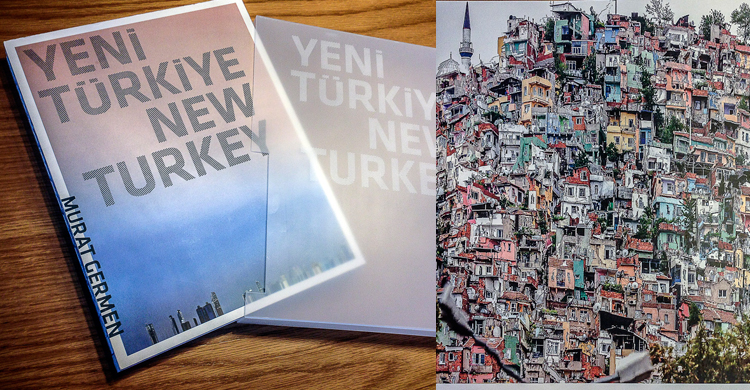27/05/2014
Sabancı University faculty member and photography artist Murat Germen published his monograph. Murathan Mungan contributed a review piece to Murat Germen’s book.

Written through Germen’s artistic perspective, the book discusses some of the most caustic issues in the last decade of Turkey, including “damaging” gentrification, industrial growth led by economic development, social engineering, connections between art and capital, road constructions that don’t help public transport and lead to further traffic issues, and the Gezi Resistance as the most significant social movement in Turkish history. Murathan Mungan contributed a review to Murat Germen’s book.
Murathan Mungan: “Regardless of their field and creative discipline, I have always been most intrigued by artists that have an ‘issue’. I believe that only those with an issue can have an adventure. Considering the works of Murat Germen, a combination of mastery and artistry, you can see that he is a photographer with an issue above all.”
“…Murat Germen’s eye has a ‘cinemascope’ sensibility. As far as I can see and understand, Germen photographs every object, every situation, every appearance with a scrutiny that is in close observation of the worldwide network of global photography. His works apparently require significant preparation and an intense, meticulous labor.
I must also add that looking at Murat Germen’s photographs gives one pleasure.”
Regarded one of the most important Turkish representatives of contemporary photographic art, Sabancı University Faculty of Arts and Social Sciences member Murat Germen published a monographic volume of his work. The body of the book is composed of unique interpretations by Germen in different experimentations, and has eight chapters on the “New Turkey” from the 2000s to the present day.
The book also includes opinion pieces by Murathan Mungan and Necmi Sönmez, an interview with the artist by Photographische Sammlung Köln’s curator Barbara Hoffmann Johnson, and notes by Germen.
It is not a coincidence that Murat Germen’s objective is always focused on the “present time” of Turkey. Regardless of the subject and how different the perspective and technique are, the artist has an initially obscure, documentary approach due to his unpredictable view of the cultural, economic and social landscape shaped by the New Turkey. Documentary isn’t necessarily confined to a well-worn, highly-orthodox method of documenting with prescriptive limitations and perceptions, but stands at an angle that knows how to view issues from a perspective of causality. The meticulously chosen subjects of Germen are the products of a personalized perspective.
The argument in Murat Germen’s book is the unique interpretation that the artist achieves when making the dynamics of social change manifest, based on metaphors and with a clarity that makes literature redundant. The interpretation is humanist above all, and brings out the various layers of Turkey without criticism, inquisition or comparison; therefore taking the labor, sacrifice and creation of the human being to the forefront rather than its portrait. The appearance of the urban sphere, areas of production, and nature as shaped by mankind as a leitmotif in Murat Germen’s photography can be considered the internalization of the New Turkey. Oftentimes, Germen takes this beyond the possibilities of photographic technique and interprets this at a level of contemporary art production. Having formed his personal perspective through a difficult and interdisciplinary process, Murat Germen has a particularly striking artistic disposition. Written through Germen’s artistic perspective, the book discusses some of the most caustic issues in the last decade of Turkey, including “damaging” gentrification, industrial growth led by economic development, social engineering, connections between art and capital, road constructions that don’t help public transport and lead to further traffic issues, and the Gezi Resistance as the most significant social movement in Turkish history.

